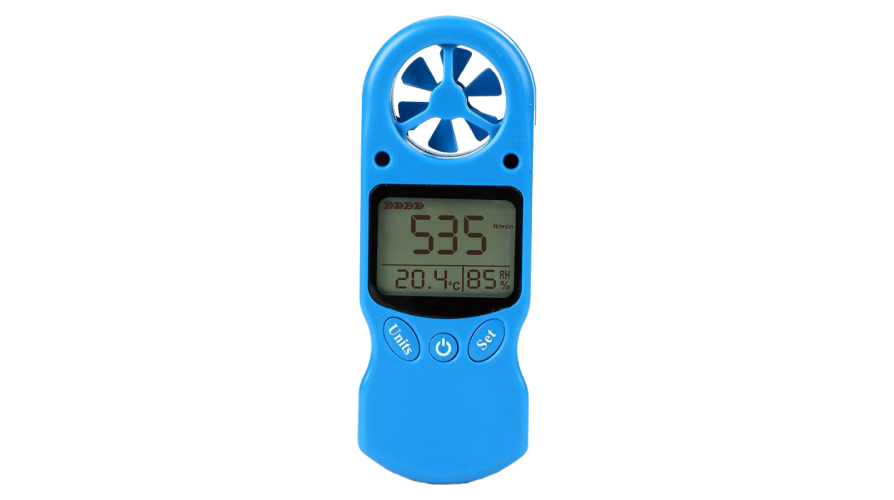Anemometer Innovations: The Current Modern Technology for Wind Rate Dimension
Anemometer Innovations: The Current Modern Technology for Wind Rate Dimension
Blog Article
Anemometers Introduced: Recognizing Their Value in Ecological Surveillance and Precaution
The duty of anemometers in environmental surveillance and security measures is often undervalued, yet their importance is undeniable. From meteorology to aviation safety and security, anemometers play an essential duty in providing accurate information that informs decision-making procedures and enhances general safety and security.
Background of Anemometers
The evolution of anemometers can be mapped back to the ancient worlds where fundamental wind measuring tools were first made use of. These early wind dimension devices laid the foundation for the growth of more advanced anemometers over time. Among the earliest known anemometers was the hemispherical cup anemometer designed by Leon Battista Alberti in the 15th century. This design consisted of 4 hemispherical mugs that collected wind power, supplying a dimension of its intensity based on the rate of turning.
In the 18th century, the prominent researcher John Thomas Romney Robinson presented the Robinson anemometer, which included 4 hemispherical mugs mounted on horizontal arms that prolonged from a central axis. This style came to be a standard in meteorological measurements because of its precision and integrity. Over the years, developments in innovation brought about the growth of more contemporary anemometers, including ultrasonic anemometers and laser Doppler anemometers, using boosted accuracy and performance in gauging wind rate and instructions. The background of anemometers showcases an impressive journey of advancement and progression in the field of meteorology.
Kinds Of Anemometers
Throughout the field of weather forecasting, numerous sorts of anemometers have been developed to properly determine wind speed and instructions. One of the most typical type is the mug anemometer, which is composed of three or 4 cups mounted on straight arms that turn with the wind. As the cups rotate, the speed at which they rotate is straight proportional to the wind rate. One more widely made use of type is the vane anemometer, which includes a tail or fin that aligns itself with the wind instructions. This alignment enables the gadget to establish the wind instructions. Sonic anemometers make use of ultrasonic signals to determine wind rate and instructions accurately. They are commonly utilized in study applications because of their high precision. Hot-wire anemometers run based on the concept that the cooling effect of wind on a heated wire is symmetrical to the wind speed. These anemometers are ideal for measuring reduced wind speeds with high precision. Each sort of anemometer has its staminas and is chosen based on the details demands of the monitoring task handy.
Applications in Weather Forecasting
Having actually reviewed the various types of anemometers made use of in meteorology for measuring wind speed and direction, it is vital to discover their sensible applications in the area. Anemometers play an essential function in meteorology by offering real-time and precise information on wind problems (anemometer). Meteorologists have a peek here utilize anemometers to check wind rate and direction to anticipate climate patterns, concern warnings for serious climate occasions like tornados, hurricanes, and hurricanes, and examine weather for air travel safety
In meteorology, anemometers help in comprehending regional and regional wind patterns, which are essential for forecasting climate adjustments and determining climatic fads. These tools are additionally utilized in research study to study microclimates, urban heat islands, and air pollution diffusion. Additionally, anemometers are utilized in agriculture to optimize plant administration practices, such as watering and pesticide application, based upon wind problems.
Value in Air Travel Safety
An important aspect of making sure air travel safety lies in the precise monitoring of wind conditions utilizing anemometers. Anemometers play a crucial role in aviation by supplying real-time information on wind rate and instructions, helping pilots in making notified decisions throughout flight, touchdown, and take-off. Uncertain and strong winds can dramatically affect airplane procedures, making it crucial for air travel authorities to count on precise wind dimensions to guarantee the safety of travelers and crew.

In the vibrant environment of air travel, where also minor adjustments in wind speed and instructions can have profound results, anemometers stand as vital tools for advertising risk-free and safe and secure flight.
Role in Environmental Study
Anemometers play a critical role in environmental research by offering necessary information on wind speed and direction. By precisely determining wind features, anemometers help researchers examine the movement of contaminants in the air, examine the impact of industrial exhausts, and predict the spread of pollutants in the setting.


Conclusion
In final thought, anemometers have actually played an essential function in environmental surveillance and security steps. Understanding the value of anemometers is necessary for accurately gauging wind rate and direction, which is crucial for predicting climate patterns, making sure risk-free aeronautics operations, and performing environmental researches.
One of the earliest recognized anemometers was the hemispherical mug anemometer developed by Leon Battista Alberti in the 15th century. Over the years, developments in modern technology led to the development of more contemporary anemometers, consisting of ultrasonic anemometers and laser Doppler anemometers, providing raised precision and performance in measuring wind rate and instructions. Hot-wire anemometers operate based on the concept that the cooling effect of wind on a heated cord is proportional to the wind speed. Meteorologists use anemometers to keep track of wind rate and direction to forecast weather condition patterns, concern warnings for serious climate events like cyclones, hurricanes, and storms, and examine atmospheric problems for aviation safety and security.
Understanding the relevance of anemometers is necessary for precisely measuring wind rate and direction, which is important for predicting weather condition patterns, ensuring secure aviation procedures, and conducting environmental researches. (anemometer)
Report this page